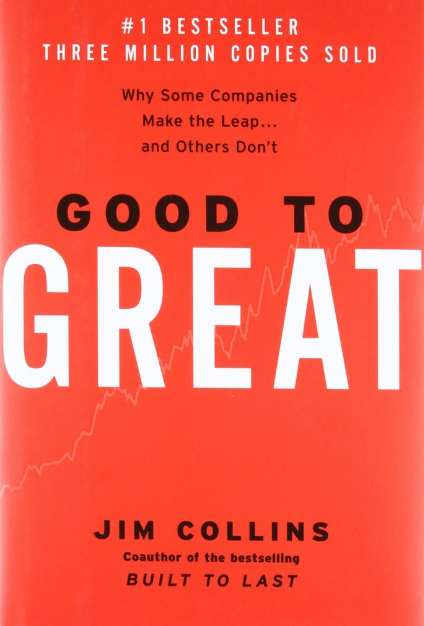In Good to Great, Jim Collins explores why some companies endure while others don’t. The book investigates what characteristics make a company truly great and what sets them apart from the average companies. Collins and his team studied companies over 40 years to find common factors that lead to long-term success.

Key takeaways from the book include the importance of a strong, visionary leader, cultivating a disciplined culture, focusing on strengths, using technology as an accelerator, and surrounding oneself with the right people.
“Good is the enemy of great. And that is one of the key reasons why we have so little that becomes great.” – Jim Collins
One of the main themes in Good to Great is the concept of “Level 5 Leadership”.
This refers to leaders with personal humility and professional will, driven by ambition for the company rather than personal success. They aren’t flashy or charismatic but are dedicated to the company’s success and ready to make tough decisions for its long-term benefit.
Another key factor in achieving greatness is creating a culture of discipline within the company.
Set clear goals, hold yourself and your team accountable, and consistently make disciplined choices that align with those goals. In addition, successful companies focus on their core strengths rather than trying to do everything. They identify what they do best and then build upon it to create a competitive advantage.
Technology is seen as a key tool for great companies, serving as an accelerator rather than the primary driver of success.
Technology should enhance and amplify a company’s strengths, not be used as a solution for all problems.
Lastly, having the right people in the right positions is crucial for long-term success.
Great companies have a rigorous hiring process and are not afraid to make tough decisions when it comes to personnel. They also prioritize finding individuals who fit into their company culture and share their values.
Overall, Good to Great offers insights on achieving long-term success by focusing on leadership, discipline, strengths, technology, and people. It guides businesses aiming to move from good to great and offers important lessons for current and aspiring leaders.
It is essential for businesses to focus not only on short-term gains but also to have a long-term vision and make disciplined choices to achieve greatness. The book continues to be a relevant and influential resource for companies striving for sustained success. Its principles apply to various industries and serve as a valuable roadmap for organizations aiming to reach the next level of excellence.
Click here for a review on the book, the 48 Laws of Power.

